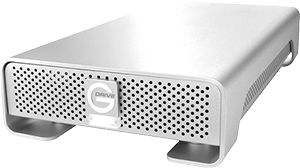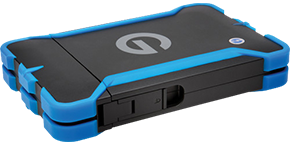For some reason, the B word sets off feelings of angst and frustration. As a young person, I was coached by great leaders to run towards a problem, and still try to do so. You all can too, at least in this regard because ensuring that our digital assets are safe is one of the easiest things to do.
Our parents and grandparents kept photos in albums and shoeboxes. Home movies and home videotapes invariably went into labeled boxes. We may not have spent a lot of time going back to look, but we knew where things were and could find stuff in a reasonable amount of time.
We, as a species, make more images in a single day than the prior generation may have made in a year. That’s a lot of images, and while many of them are surely not keepers, we tend to treat them poorly. They live on devices, on memory cards and on hard drives that become the sole repositories of our life’s memories.

Today’s technology is pretty much built for the now. I have an old Nakamichi tape deck that still works as well as the day it was built some thirty years ago, although I confess I have not fallen into the golden warmth of loving the sound of tape hiss and rumble. I do not have a thirty year old hard drive and have had more than I can recall become too small to be usable, get lost, or fail. I have put memory cards through the laundry. I’ve replaced my smartphone every couple of years. In every one of these cases, something important could have been, and in many cases was, lost.
Let’s start with the computer. As interested photographers and videographers, we import our created content to a computer, either as a storage location, or as the place where we will continue to work on our creations. There’s a rule in information technology that data not in three places is not backed up at all. Do you backup your computer data? It’s easy. Even if you think nothing will happen, you just never know and it is best to have a backup of everything just in case. Once it’s gone, it’s gone unless you have a backup and disaster recovery solution in place.
Many businesses now are hiring back up solution companies that also offer a wide variety of IT solution products, such as this company EATEL.

We will start with the Macintosh. All recent versions of the Macintosh OS X operating system have a service called Time Machine. Plug an external drive into your Macintosh, activate the drive as a Time Machine target and the system backs up the entire internal drive transparently in the background, retains older copies of the same files and includes a simple interface to get files back, or even to rebuild a brand new system, if something goes wrong. If you have a Mac and aren’t using Time Machine, you are cheating yourself on function and simplicity.
If you have a Windows based machine, different versions of Windows include, or don’t include, backup tools. These are included in the OS and depending on version are very functional and easy to use, but hard to find and frustrating. Even the huge improvements in Windows 10 don’t bring all the tools into one place so I recommend the very excellent Acronis True Image. It does what Time Machine does on a Mac, but for Windows machines.
If you do this step, you now have two copies of your files on two different storage platforms. To find the third, many people have been copying or using utilities to make a copy of key files, such as photos and videos onto blank DVD media. They then take that media to another location, perhaps their office, a safe deposit box, or the home of a friend or relative. This works, but is time consuming, costly in terms of media, and often gets ignored because other things get in the way. We’ve also learned that the operational life of writable media is shorter than we had hoped, seeing the coatings on this media start decaying in less than five years. A more practical solution, providing one has a higher speed Internet connection, is to use a cloud service. For this, you may need to compare broadband suppliers so that you’ll have a great connection and can access your images from various devices.
Cloud services vary in cost and efficiency. Some only back up the computer’s internal drive. Some work so slowly that your backup could take years. Some only offer restoration via download. Some only work on a single computer. As a customer you need to consider these and other considerations in choosing a provider. I have used a service called Crashplan from Code42, for many years. It is only limited by the number of computers in the home, and does not care whether the drive being backed up is internal or external. It allows folder level control, so you don’t have to back up to the cloud what you do not want to backup. There are many alternatives.
Some people use a productivity enhancing storage such as Dropbox, Google Drive, Apple iCloud or Microsoft’s OneDrive. All are viable options so long as the cost and access works for you.
If you’ve done these steps, you now have three copies of your images and videos, the primary, a local backup and an offsite backup, and that is good data management. It also means that should something horrible happen, your once in a lifetime memories are still available.

G-Tech 4TB USB 3 External Drive
When it comes to that local backup, I personally recommend external storage, with a preference to powered storage rather than drives that are powered from the computer’s bus. Firewire used to be great, but it’s popularity has fallen off along with vendor support. USB 2 is grindingly slow, so avoid it unless your computer only has USB 2 as an option. USB 3 is a very different architecture from USB 2, both much faster in terms of throughput, and much more efficient as a means to move and copy data.

G-Tech 1TB Portable Thunderbolt Drive
Thunderbolt is extremely fast and very efficient. Go with the fastest interface your system can handle, and if you are buying a self contained device, you want the fastest drive you can afford. A 7200rpm drive is a much superior backup location than a 4800rpm drive or a 5400rpm drive.
Don’t get caught up in pretty enclosures. It’s the guts that matter. Many drives come with “Free” backup software. It’s worth what you pay for it, use a proper backup product and avoid frustration down the road. Based on current industry data, you’ll be well served by most major providers.
The last point about backup, and really the most important, is that you must do test restores from all your backups. If you don’t, you really have no backup. Fortunately this is very easy to do, even with cloud services, so there is no reason not to do so.
Backup is not the same as managing your digital assets. That’s a different opportunity, and a different article.
Until next time, peace.


